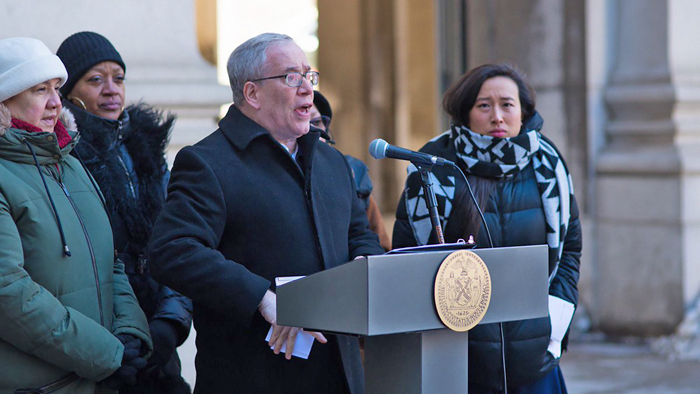File Photo
“It is unacceptable that any of our most vulnerable residents experience neglect, abuse or misconduct in the City’s long-term care facilities,” Comptroller Stringer said.
By Forum Staff
The City’s Long Term Care Ombudsman Program—which employs those who serve as essential eyes and ears to protect older adults and people with disabilities within long-term care facilities; and identify cases of abuse and neglect, advocate for resident needs and raise quality of life concerns—is massively underfunded, according the findings of an alarming new investigation recently released by City Comptroller Scott Stringer.
According to the comptroller, New York State ranks fourth in the nation in the number of people institutionalized in long-term care facilities; yet in 2017, the City did not contribute any funding to the program and the State spends less than $600,000 annually on the City’s LTCOP. The COVID-19 crisis highlights the need for the City and State to sufficiently fund the City’s LTCOP. The comptroller’s analysis, supported by federal and state reporting, suggests that in addition to the disproportionate impact of the virus, residents of nursing homes are plagued by improper administration of drugs, pressure ulcers, inappropriate discharge to homeless shelters, and mistreatment by other residents.
Highlights of Stringer’s report include:
- As of 2018, there is only one full-time paid ombudsman for every 8,650 residents in the five boroughs and one full-time paid ombudsman for about every 3,600 beds in the State’s long-term care facilities, far below the recommendation of one full-time ombudsman for every 2,000 long-term care residents.
- In Queens over 17,000 residents in 84 facilities are supported by a single full-time ombudsman aided by nine volunteers.
- There are only six full-time paid ombudsmen assigned to visit the City’s over 50,000 long-term care residents in 244 long-term care facilities.
- There is no assigned ombudsman for more than 20,000 residents in 80 long-term care facilities.
- The City has one-third of the State’s long-term care residents, yet the LTCOP managed by the Center for the Independence of the Disabled New York received less than one-seventh of the State’s funding and no funding from the City.
- The last annual report detailing the work of the Office of the State Long Term Care Ombudsman was released in 2017, and the last State or City public hearings held on the program were also in 2017, limiting insight into the most recent data from the program.
- In 2017, the State spent less than $7.34 per resident bed on its LTCOP, while the remaining 49 states, on average, spent more than twice that amount: $14.70. The State spends less than $600,000 annually on the City’s LTCOP.
“The disproportionately high number of COVID-19 deaths among our long-term care facility residents must be a wake-up call. We must step up, implement stronger oversight and accountability measures, and provide adequate funding for the ombudsmen program to guarantee that beloved friends and family are appropriately protected and that long-term care facilities are safe and secure environments for older adults and New Yorkers with disabilities,” Stringer said. “It is unacceptable that any of our most vulnerable residents experience neglect, abuse or misconduct in the City’s long-term care facilities. The City should not shirk its responsibility to the New Yorkers who built up our neighborhoods, stayed through the tough times, and remain the bedrock of our communities.”

